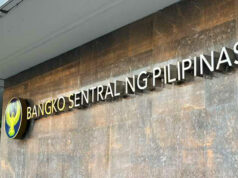Bank versus market-based financial systems
A balanced and developed finance system will have both well functioning financial intermediaries and market based institutions contributing to the economy’s growth. This is achieved through several channels: (1) acquisition on information about firms; (2) provision of risk-reducing arrangements; (3) pooling of capital; and (4) ease of making transactions. Information gathering is key to monitor the efficiency and productivity of projects. The system increases the pool of available funds and hedging of risks lead to better allocation to productive uses of funds mobilized from savers. With good governance, the financial systems can help to retain domestic savings at home.
According to the sophisticated balanced model, financial markets play an important role. Well-developed financial markets augment liquidity in the economy. Under the market system, sources of funds are atomistic household savers, directly or indirectly through mutual funds, pension funds or insurance funds. The system is relatively impersonal. In many advanced economies such as in the US, market-based finance systems are accessible to many.
Savers thus provide money to firms or governments directly through financial markets. These include the stock market, the bond market (government and corporate) and the money market for short-term securities like commercial papers. Other markets such as those for foreign exchange and for derivatives, such as futures, swaps and options, are there to make markets work more efficiently.
A balanced model benefits from competition and the availability of a larger and deeper pool of funds which allows fund users more flexibility and better service. Theoretically, this view assumes perfect substitution between the different financial assets and the neutrality of firms’ financial structure. Of course, the assumption of perfect substitution between financial assets such as bonds and loans does not hold in the presence of information asymmetries. Also, bonds and commercial papers, for example, can only be issued by larger firms in general. The firm capital structure is a determinant in gaining access to funding.
In addition, balance implies a diversified financial system, which helps cushion an economy in case of stress. In case the banking system is in trouble, capital markets can provide alternative sources of funds. And when capital market liquidity is under stress, banks can be relied upon to substitute.
In the bank-based financial model, savings flow to their productive uses predominantly through financial intermediaries. These intermediaries include banks, savings and loan associations, mutual funds and pensions funds. Banks take deposits from savers and use these to lend to borrowers. Mutual/pension funds (which likewise play a role in market-based systems) sell units to the public and invest these either in securities or to direct borrowers. The system is more relationship-based because the borrower needs to interact directly with fewer lenders. This is observable in most developing economies.
Bank-based systems are stronger in countries where governments take a direct role in industrial development such as Germany in the 19th century and Japan in the latter half of the 20th century. Because bank credit plays an important source of finance, many developing countries are reluctant to leave credit entirely to market forces because of the need to conserve scarce resources for socially productive uses. We see the prevalence of credit controls and directed credit programmes often at concessional prices. The main types of interventions are: lending requirements and quotas for banks, refinance schemes, loans at preferential interest rates, credit guarantees and lending by development finance institutions. Such programs have played important roles in the financial deepening and growth of countries like South Korea.
Obviously, our situation in the Philippines is far from balanced. The market players in the stock exchange have been limited to around 250 and given the number of registered firms in the country, this is minuscule by proportion. It is not easy to get listed in the stock market, leaving the rest of the firms dependent on bank credit for their growth prospects. Access to the bond market is limited to those who can afford the services of investment bankers.
The Philippine case is largely dependent on the role of bank credit in fuelling economic growth. Can we duplicate the success of South Korea in using directed credit to boost that country’s strong export growth? Guarantee programs, for example, dominate the SME scenes in Korea, Japan and Taiwan, but the Philippines has not been able to use this intervention properly because the rules have been compromised. Today, we see government playing key roles in directed credit in response to challenges like in food/rice. Hopefully these all work out because if the interventions are not properly packaged, it leads to an additional burden. The resultant segmentation of markets can blunt the process of price discovery and limit the allocative efficiency of financial systems. At worst, misaligned populist goals and politics could result in dysfunctional outcomes.
The country will be heavily dependent on the banking system in the short to medium term. The key challenge for monetary authorities is their ability to channel credit to the relatively disadvantaged sections of the economy. The central bank usually relies on interest rates to convey their policy stance. For this channel to be effective, the monetary policy signals must translate to bank actions on their lending rates. And this requires a level of sophistication in risk assessment that is incorporated in lending rates.
With the large information and transaction costs that are amplified by the increasing compliance costs of regulation, banks may not be fully able to account for risk profiles while pricing their loans. Credit information bureaus can help in reducing information and transaction costs. Information sharing will help in the efficient allocation of resources. Improvements in the credit delivery mechanisms are necessary so that monetary policy signals deliver on its intended results.
In the long run, the aim for a developed market system with a robust and deep capital market must not be neglected. Policy must pursue liberalization, deregulation and the creation of an enabling environment of comfortable liquidity at reasonable prices. Trends in the flow of credit to various sections of the economy must be monitored closely. Divergence of interest rates between informal and formal markets need to be narrowed down. The economy benefits if we have operative market-based and bank-based financial systems since these will complement each other in well functioning financial system.
The views expressed herein are his own and does not necessarily reflect the opinion of his office as well as FINEX.
Benel D. Lagua is Executive Vice- President at the Development Bank of the Philippines. He is an active FINEX member and a longtime advocate of risk-based lending for SMEs.



